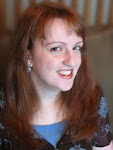Jonas's world is perfect. Everything is under control. There is no war or fear of pain. There are no choices. Every person is assigned a role in the community. Jonas lives in a seemingly ideal world. When Jonas turns 12 he is singled out to receive special training from The Giver. The Giver alone holds the memories of the true pain and pleasure of life. Not until he is given his life assignment as the Receiver does Jonas begin to understand the dark secrets behind this fragile community. Now, it is time for Jonas to receive the truth. There is no turning back. (Amazon)
Review by Kim Harris Thacker, writer, mommy, and Bookshop Talk Host
Since it is my purpose in this review to examine possible reasons why Lois Lowry’s Newbery award-winning novel, THE GIVER, has been banned in many schools and libraries, I want to make it clear that there are a number of SPOILERS in this post.
Now. Let’s dive in, shall we?
Jonas is, in so many ways, a normal, twelve-year-old boy. He is certainly a boy readers can relate to, even if those who read THE GIVER are female. He teases his sister, plays games with his friends, rides his bike, and attends school. But Jonas lives in an unusual community.
A few things you should know about Jonas’s environment:
** Almost everyone in the Jonas’s community has dark eyes, though the color itself is unimportant. No one (aside from The Receiver of Memories) can see in color or even knows what color is. Color vision was one of the things that was given up in order to have “Sameness.”
** Young people who begin to have sexual “stirrings” are required to take a pill that suppresses those feelings.
** At the age of twelve, children, who have been watched by a career-selection committee, are told what their careers will be. They begin to train. Some careers (such as birthmother) hold very little honor, but all are considered essential.
** When an adult desires to be married, he or she applies to be “matched.” A council selects a suitable spouse for the applicant, taking into account all the important factors, such as disposition and intelligence when making their decision.
** Every December, children who were born the previous year turn one year old, are given a name rather than just a number, and are given to parents who have been approved to form a family unit. A family can have only two children: one boy and one girl. If identical twins are born to a birthmother, the smallest of the twins is “released” to Elsewhere—a place Jonas knows very little about, but imagines must lie somewhere beyond the community.
** After living in a form of retirement in the House of the Old, those who reach a certain age are “released.”
** Anyone can apply to be “released” at any time.
For Jonas, none of the above is unusual—until he becomes the next Receiver of Memories. Under the guidance of the old Receiver (whom I will refer to from now on as “The Giver”) and through a kind of memory transfer, Jonas begins to see in color, learns the pain and sorrow of war, experiences love, and even tastes snow on his tongue for the very first time. He begins to see how truly horrifying his community is, because he is exposed to memories of how the world used to be before “Sameness.” And when The Giver has him watch a video of his father (who is a nurturer of babies) “releasing” a new baby, Jonas is horrified. He learns that being “released” means being killed, by injection. In this scene, Jonas’s father acts in a way that I think any reader will see as shockingly callous. What’s tricky about this scene is that we learn that Jonas’s father truly does not realize the wickedness of what he is doing. In fact, Jonas only realizes it because of the training he is going through with The Giver.
I think what is so disturbing about THE GIVER is that the characters (aside from Jonas and The Giver) are all very content with their lives, though we, the readers who live in the real world, know they shouldn’t be! We know that the “Sameness” the leaders of Jonas’s community speak of sounds too much like Hitler’s racist Aryanism. We know that humans have certain inalienable rights. Jonas’s world, which is so accepted by the characters in it, feels so unethical and corrupt to the reader. We long for Jonas to get out of there! It is a very bad place, and while many of the characters in the book don’t realize that, the reader always does. There is never any question whether or not Jonas’s world is ideal. So why has this book been banned?
I did a bit of research on the internet and found references to the book being banned because of the “stirrings” that are mentioned. In my opinion, that would be a ridiculous reason for banning this book. The references to “stirrings” are milder than mild. I found other references stating that this book promotes euthanasia. This book does not show euthanasia in a positive light.
I don’t believe this book should be banned. I do believe that parents and teachers should read it with their children and be prepared to talk about it, because of its themes. I also believe it should be given to mature readers who can handle intense or violent scenes. As an adult reader, I was rather disturbed by the scene where Jonas’s father releases the baby. It is an intense book, overall. Jonas’s world is twisted and horrifying. But there is so much to talk about when reading this book, and it is so well written!
Market: middle grade, dystopian
Language: none
Sensuality: extremely mild (a couple of references to sexual “stirrings”)
Violence: moderate to extreme (The only reason I say this is that for a middle grade novel, the scene where Jonas’s father releases the baby seems a bit extreme. I was quite disturbed by it. But it was also very fitting for the book. Jonas needed to see what was really happening right under his nose. There is also a scene where Jonas witnesses, through memory, the death of a young soldier on a battlefield. There are also many other references to people being “released,” but none are graphic.)
Mature Themes: See above review!
Book formats:







































